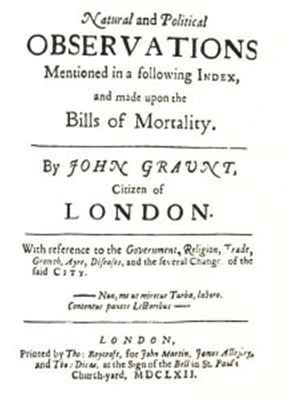What is demography?

Title page of John Graunt’s Natural and Political Observations Made Upon the Bills of Mortality (1662). Graunt’s development of the life table has led to him being described as "the father of modern demography" (Smith and Keyfitz 1977), although many others could lay claim to this title.
Demography has been described as the "quantitative study of human populations" (Ross 1982). In this sense, the main concerns of demographers are the size and structure of human populations and the changes to the size and structure caused by vital events – namely births, deaths and migration. It is the size and structure of populations that are described as population stock and the changes caused by vital events that are referred to as population flow.
However in practice demography is a largely interdisciplinary subject and the work of demographers often overlaps with the following fields (among others):
- Sociology
- Epidemiology
- Economics
- Reproductive health
- History
- Anthropology
- Medical statistics
- Human ecology
- Social policy
Because of this overlap the distinction is often made between pure or formal demography which deals mainly with the quantitative aspect, and population studies which draws a wider frame of reference and seeks to shed light on the connections between the numerical aspects of population and wider social, economic and cultural factors.